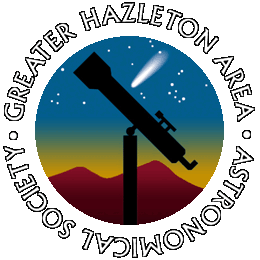 General Conditions
General Conditions
-
- Sunset: ~5:00 PM EST
-
- Astronomical Twilight Ends: ~6:30 PM
-
- Dark Sky Window: ~6:30 PM – 5:30 AM
-
- Milky Way: Prominent early evening in the southwest, running through Aquila and Cygnus
-
- Best Seeing Hours: 9 PM – 2 AM (calm air after temperature stabilizes)
 1. PLANETS
1. PLANETS
Jupiter — King of the Planets
-
- Constellation: Aries
-
- Visibility: Rises near sunset, visible all night
-
- Details: At opposition in early November, shining at mag –2.9 and ~50″ wide — ideal for high-power views.
-
- Features: Watch for the Great Red Spot transits and shadow crossings of the Galilean moons.
-
- Astrophotography Tip: Use short video captures (≤ 1 min) to stack in AutoStakkert! for detailed results.
Saturn
-
- Constellation: Aquarius
-
- Visibility: Early evening in the southwest
-
- Details: Rings still nicely open (~18° tilt); disk ~17″, magnitude +0.7.
-
- Observation: Great for public events before 9 PM. Titan is easily visible in small scopes.
Uranus & Neptune
-
- Uranus: In Aries, mag +5.7, visible all night; opposition mid-month — excellent imaging target for Seestar S50.
-
- Neptune: In Aquarius, mag +7.8; visible early evening with a bluish tint in small scopes.
 2. DEEP-SKY SHOWPIECES
2. DEEP-SKY SHOWPIECES
The Andromeda Galaxy (M31)
-
- Type: Spiral Galaxy
-
- Magnitude: +3.4
-
- Location: Andromeda
-
- Best Time: 8 PM – 2 AM high overhead
-
- Details: Easily visible to naked eye from dark sites; fills the Seestar’s FOV nicely.
-
- Targets nearby: M32 and M110 companion galaxies.
The Double Cluster (NGC 869 & 884)
-
- Type: Open Clusters
-
- Constellation: Perseus
-
- Magnitude: +4.3
-
- Details: A dazzling twin cluster through binoculars or wide-field imaging — brilliant blue and gold stars.
-
- Best Time: 9 PM – 3 AM near zenith.
The Pleiades (M45)
-
- Type: Open Cluster
-
- Constellation: Taurus
-
- Magnitude: +1.6
-
- Details: “Seven Sisters,” visible to the naked eye. Under long exposures, faint reflection nebulae appear — an ideal Seestar target.
-
- Best Time: 10 PM – 4 AM overhead by midnight.
Orion Nebula (M42 & M43)
-
- Type: Emission Nebula
-
- Constellation: Orion
-
- Magnitude: +4.0
-
- Details: Rising in the southeast by ~11 PM. The Trapezium cluster is visible even at 50×.
-
- Astrophotography: Use multiple short exposures to capture both the bright core and faint outer gas.
-
- Bonus: Include the Running Man Nebula (NGC 1977) in wide-field views.
The Crab Nebula (M1)
-
- Type: Supernova Remnant
-
- Constellation: Taurus
-
- Magnitude: +8.4
-
- Details: Near Zeta Tauri (the southern horn of Taurus). Subtle but rewarding with good transparency.
The Triangulum Galaxy (M33)
-
- Type: Spiral Galaxy
-
- Constellation: Triangulum
-
- Magnitude: +5.7
-
- Details: Large, diffuse face-on spiral; best seen from dark skies. Shows structure in stacked Seestar images.
The Hyades Cluster
-
- Type: Open Cluster
-
- Constellation: Taurus
-
- Magnitude: +0.5
-
- Details: Forms the “V” shape of Taurus’s face. Aldebaran appears part of it but lies in foreground. Excellent binocular target.
 3. EARLY WINTER CONSTELLATIONS
3. EARLY WINTER CONSTELLATIONS
| Constellation | Key Targets | Notes |
|---|---|---|
| Cassiopeia | M52, M103, Bubble Nebula | Overhead; rich in open clusters |
| Perseus | Double Cluster, California Nebula (NGC 1499) | Great wide-field imaging |
| Taurus | M45, M1, Hyades | Bright in east by mid-evening |
| Orion | M42, NGC 1981, Belt Stars | Rising late; heralds winter sky |
| Auriga | M36, M37, M38 | Three open clusters within one degree — perfect small-scope targets |
 4. METEOR SHOWERS
4. METEOR SHOWERS
Leonids (Nov 17–18)
-
- Radiant: Leo
-
- ZHR: ~15–20/hr
-
- Peak Window: Morning of Nov 18 before dawn
-
- Moon Phase: Often favorable — look east after midnight
-
- Note: Historically produces spectacular storms (~33-year cycle)
 5. BONUS OBJECTS FOR SMALL TELESCOPES
5. BONUS OBJECTS FOR SMALL TELESCOPES
| Object | Type | Mag | Notes |
|---|---|---|---|
| NGC 457 (ET Cluster) | Open Cluster | 6.4 | Cassiopeia; looks like an alien “ET” with outstretched arms |
| NGC 2392 (Eskimo Nebula) | Planetary Nebula | 9.2 | Gemini; bright inner core |
| NGC 7662 (Blue Snowball) | Planetary Nebula | 8.3 | Andromeda; tiny turquoise disk |
| NGC 253 (Sculptor Galaxy) | Spiral Galaxy | 7.1 | Low in south; bright elongated core |
| IC 405 (Flaming Star Nebula) | Emission Nebula | 6.0 | Auriga; requires long exposures |
